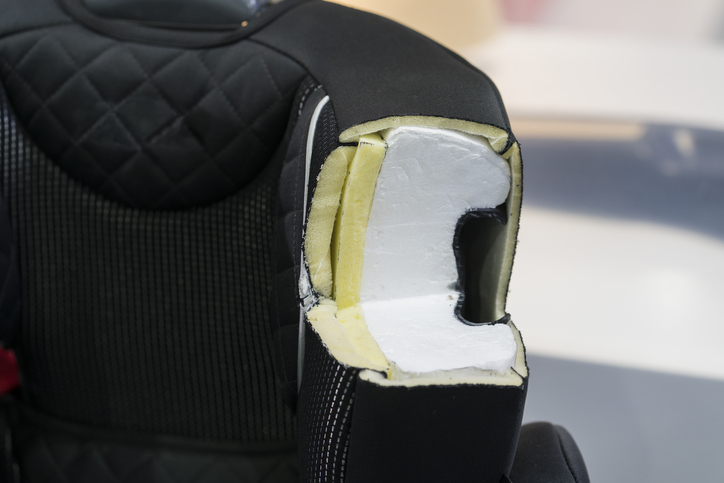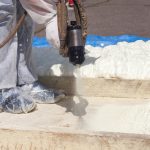The New Year is Coming — How Will You Improve Your Production Process?
It’s no secret that 2020 has been a challenging year for manufacturers. Regardless of industry, companies around the world have had to tackle new complexities and roadblocks as a result of the pandemic, tariff challenges, and the subsequent supply and logistics hurdles. But from these challenges have come new ways of thinking, innovative new processes, and solutions designed to help companies get back on track — and stay on it.
Companies are shifting gears to try to avoid the pains experienced earlier this year and to leverage what they’ve learned for greater performance in the weeks and months ahead. For companies manufacturing products or otherwise using polyurethane in their work, identifying solutions to support this goal has become an important part of 2021 planning. One essential element is custom chemical mixing, or how companies can achieve greater performance out of their polyurethane blends than ever before. This is both to improve product performance but also to make more effective use of the material during production.
Custom chemical mixing is not a single-step process, however. Achieving success requires a strong foundation at several key steps before the product is even manufactured. Here, we’ll explore a few of these steps, the equipment used in them, and why they’re so important to consider in your planning for the road ahead. Let’s dig in.
Start 2021 off strong. Validate your material and equipment to ensure reliable performance 24/7. Contact us to learn how.
3 Steps of Successful Custom Chemical Mixing
1. Pre-Production Blending
Your facility will have the necessary polyurethane chemicals needed for your product or application well in advance of those materials actually being used. Often, these are stored in 55-gallon drums that must be unloaded, stored, handled, and properly disposed of or sent back to the supplier. This inefficient process adds significant expense and time to any project — to say nothing of how little it supports custom chemical mixing.
Bulk blending solutions are the solution here. Instead of dealing with wasteful, time- and space-consuming, and potentially hazardous drums, bulk blending and storage solutions allow you to seamlessly store the chemicals you need in large containers that are integrated into your production cycle. Bulk blending equipment can be connected to the storage tanks, allowing a more efficient transfer of material from one step to another. This reduces the risk of incidents occurring on the shop floor while making more cost-effective use of space and human effort — and producing more efficient and accurate custom chemical mixing results.
Explore the efficiencies of bulk storage and blending solutions.
2. Material Performance Improvement
Once your material blend has been properly blended, its performance can be enhanced through gas infusion (also called gas nucleation). This is an essential step for any organization looking to take their material to the next level, ensuring it not only meets customer expectations upfront but that it continues to do so for years to come. Two types of gas infusion equipment should be used to support custom chemical mixing: CO2 and N2.
CO2 gas infusion systems support the homogenous distribution of this gas throughout your chemical mixture (in an automated fashion requiring little manual involvement). The result is reduced chemical costs, minimized consumption of CO2, improved cell structure, and other material-specific aims like weight reduction and sound absorption — all of which contribute to better ROI.
N2 gas infusion systems support custom chemical mixing in a number of ways that ultimately lead to better material and product performance. For example, N2 infusion helps to resolve voids in the material, improve wet-ability for better dispersion, improve mixing quality and material flow, and eliminate surface defects like streaks and runs. The best part is that it can be integrated into an existing production chain, whether it be one that we built or another. In addition to improving these material characteristics, N2 helps to reduce product and material waste, allowing you to realize higher ROI sooner.
Explore gas infusion equipment options and benefits.
3. Efficient Material Distribution
While bulk blending and gas nucleation help to set the stage for stronger material performance and greater overall efficiency, the real magic happens in the mix head. There are a variety of mix head styles and configurations to meet different production goals.
For example, the L-style mix head features two perpendicular mixing chambers. Materials counter-impinge in a small horizontal chamber and are then forced into a larger chamber from where they’re distributed. The 90° change results in greater mixing, velocity reduction, and improved laminar flow. While other mix head options could be used, it’s solutions like this that ensure better performance both of the material itself and the resulting application.
Explore mix heads for successful material distribution.
Custom Chemical Mixing Success in 2021 Starts with Linden Polyurethane
For nearly 40 years, Linden Polyurethane has been supporting companies in multiple industries with their polyurethane production goals. Every piece of equipment we offer is not only custom-engineered to your specific environment and needs but is also supported by the industry’s best warranty program and service team. Whether you need a critical part rebuilt or replaced, or you need on-site service from a field technician, our team will be there for you in 2021 and beyond — ensuring you have everything you need to maintain maximum productivity and results.
We hope you have a wonderful holiday season and a prosperous New Year. Remember that our team is always available 24/7 to support your organization with custom chemical mixing solutions or other equipment and services.
If we can support your goals in 2021, don’t hesitate to reach out.





